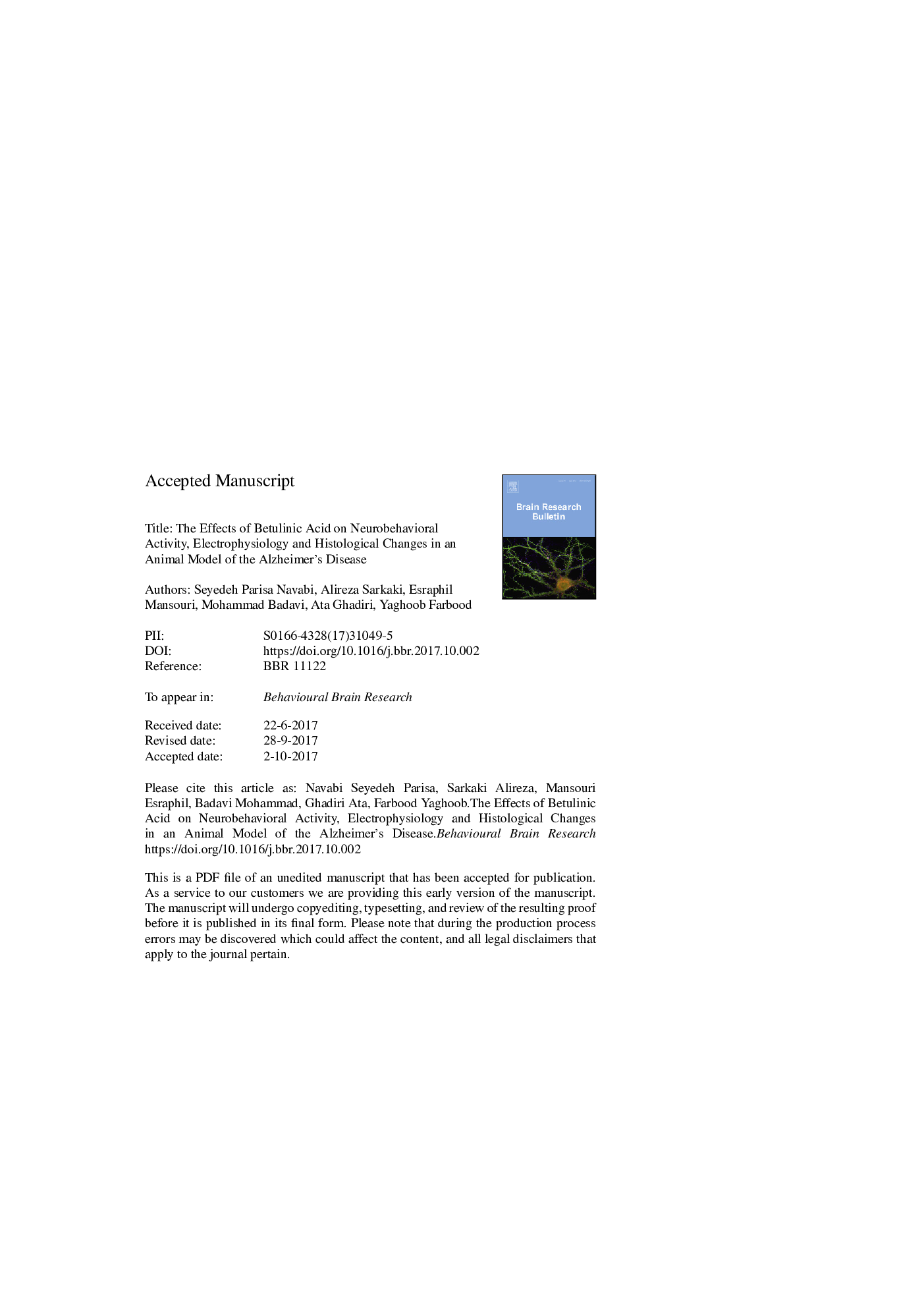| Article ID | Journal | Published Year | Pages | File Type |
|---|---|---|---|---|
| 5735258 | Behavioural Brain Research | 2018 | 21 Pages |
Abstract
Alzheimer's disease (AD) is a common disorder characterized by aggregation and conversion of amyloid beta (Aβ) monomers to fibrils. Betulinic acid (BA) strongly accelerated this pathway through circumventing the oligomeric intermediate state. BA at doses of 0.2 and 0.4 μM/10 μl/rat (intra-hippocampal or i.h injection, vehicle: DMSO) was bilaterally administrated 180 and 10 min before co-administration of Aβ (0.1 μM/5 μl/rat, i.h injection, vehicle: PBS) and Streptozotocin (STZ, 1.5 mg/kg/10 μl/rat, intracerebroventricular or i.c.v. injection, vehicle: aCSF). The behavioral assessments (spatial and passive avoidance memory, anxiety, locomotion, depression, and motor coordination), electrophysiological evaluations (hippocampal long- term potentiation (LTP)) as well as histological changes were evaluated 30 days after injections. The indices of spatial and passive avoidance memory, anxiety/depression and LTP records were significantly impaired in AD rats in comparison with the sham. Pretreatment of BA (0.4 μM) showed a more significant effect on memory, anxiety, all LTP parameters, and histological damage compared to a low dose in contrast to the AD group. Overall, BA pretreatment was able to prevent AD-induced neurobehavioral and LTP deficits in rats and the best effect was observed in molar ratio of 1:4 (Aβ to BA).
Keywords
i.c.vaCSFFSTSTZPBSopen arm timeEPMAMPfEPSPAβMWMAUCOAEDMSOROSelevated plus maze testForced swimming teststreptozotocinBetulinic acidanxiety/depressionPopulation spikeamyloid betaAlzheimer's diseaseAlzheimer’s diseaseanalysis of varianceANOVAIntracerebroventricular administrationLTPOatMemoryAmplitudeCNSDimethyl sulfoxidecentral nervous systemdentate gyrusPhosphate buffered salineLocomotor activityMorris water mazeartificial cerebrospinal fluidarea under curveRatfield excitatory post-synaptic potentialReactive oxygen species
Related Topics
Life Sciences
Neuroscience
Behavioral Neuroscience
Authors
Seyedeh Parisa Navabi, Alireza Sarkaki, Esrafil Mansouri, Mohammad Badavi, Ata Ghadiri, Yaghoob Farbood,
